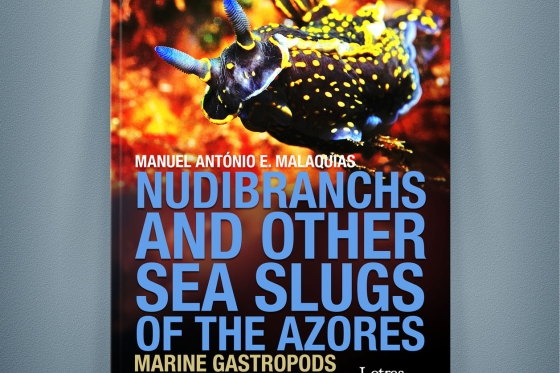Hva kan vi lære av havets små underverk på Azorene?
En ny bok om de fascinerende nakensneglene og andre sjølevende bløtdyr på Azorene tar oss med til en verden under havoverflaten som er både vakker og truet.
Professor Manuel António E. Malaquias har nylig utgitt boken "Nudibranchs and other sea slugs of the Azorean Islands", et resultat av over 20 års forskning på det marine livet i dette isolerte øyriket midt i Atlanterhavet.
I boken fremhever Malaquias ikke bare skjønnheten i Azorenes marine fauna, men også de alvorlige utfordringene disse artene står overfor. Klimaendringer og menneskelige aktiviteter bringer med seg invaderende arter, som den brune algen Rugulopteryx okamurae, som legger seg som et teppe over de grunne steinete kystlinjene og fortrenger det rike livet som normalt trives der – inkludert nakensneglene.
Vil de overleve i havet
Spørsmålet vi må stille oss er: Vil disse små mesterverkene i havet overleve, eller er vi i ferd med å miste dem for godt?
Boken fungerer som en verdifull ressurs for forskere, dykkere og naturentusiaster som ønsker å forstå mer om denne artsgruppen og deres rolle i økosystemet. Med over 110 arter av nakensnegler illustrert og beskrevet, gir boken en innsiktsfull og tilgjengelig guide til Azorenes unike marine liv. Den er ikke bare en hyllest til øyenes biologiske mangfold, men også en påminnelse om hvor sårbare disse økosystemene er.
Levende liv
Azorene, med sin spesielle beliggenhet mellom Europa og Amerika, byr på en fascinerende blanding av øst-atlantiske og vest-atlantiske arter. Dette gjør øygruppen til et levende laboratorium av liv som fortjener å bli studert og bevart. Malaquias’ bok er ikke bare en vitenskapelig reise inn i nakensneglenes verden, men også en oppfordring til å beskytte vår felles naturarv før det er for sent.
Manuel António E. Malaquias er professor i invertebratsystematikk ved Universitetet i Bergen. Boken hans er et verktøy for alle som ønsker å bidra til bevaringen av havets små underverk.
Les mer her: https://www.uib.no/en/rg/mollusca
ENGLISH:
What can we learn from the small wonders of the sea in the Azores?
A new book about the fascinating nudibranchs and other sea slug molluscs from the Azores takes us to an underwater world that is both beautiful and threatened. Professor Manuel António E. Malaquias has recently published the book “Nudibranchs and other sea slugs of the Azorean Islands”, the result of over 20 years of research on the marine life in this isolated archipelago in the middle of the Atlantic Ocean.
In the book, Malaquias highlights not only the beauty of the Azores' marine fauna but also the seriousness of the challenges these species now face. Climate change and human activities are bringing invasive species, such as the brown algae Rugulopteryx okamurae, which blankets the shallow, rocky coastlines and displaces the rich life that usually thrives there including the nudibranchs. The question we must ask: will these small masterpieces of the sea survive, or are we about to lose them for good?
The book serves as an important resource for researchers, divers, and nature enthusiasts who want to understand more about these animals and their role in the ecosystem. The book is an insightful and accessible guide to the unique marine life of the Azores. It is not only a tribute to the islands' biodiversity but also a reminder of how vulnerable these ecosystems are.
The Azores, with its special geography located in the middle of the Atlantic Ocean halfway between Europe and America, offers a fascinating blending of East Atlantic and West Atlantic species. This makes the archipelago a living laboratory that deserves to be studied and preserved. Malaquias’ book is not only a scientific journey into the world of nudibranchs but also a call to protect our shared natural heritage before it's too late.
Manuel António E. Malaquias is a professor of invertebrate systematics at the University Museum of Bergen, and his book is a tool for anyone who wants to learn more and contribute to the conservation of the ocean’s small wonders.
